Measuring an animal’s true flight speed is tricky. And when something is difficult, it’s often tempting to just make it up, or guess instead.
Much like the way a motorcycle always goes faster when nobody is recording it, animal flying speeds appear to be slower than they are commonly reported when closely studied.
Should birds that use gravity by diving be considered? What about speeds which appear to have been influenced largely by wind speed?
For the sake of accuracy, we’ve used only verified sources and studies to bring you the definitive top ten fastest flying birds (well, animals) in the air, in the world.

Top 10 Fastest Flying Animals
You might have heard that the peregrine falcon is the fastest animal in the air, capable of speeds of up to almost 389 kmph / 242 mph.
And while this is true, such record-breaking speed only occurs during a rapid dive or ‘stoop’, and isn’t powered by flight as much as it is by gravity and aerodynamics.
Should it count? Maybe.
But one question that has plagued animal speed researchers for generations is whether the terminal velocity of a blue marlin would be faster than its swim speed if it were slung like a javelin out of a hot air balloon.
Would it be faster than the Peregrine, even?
When dealing with natural sciences, these are the most important questions to ask, and there’s only one way to find out.
Yet sadly, due to a lack of relevant funding, the airspeed data on fish is still limited, so here are the top fastest animals in powered flight, followed by the fastest including dive speeds.
1. Mexican Free-tailed Bat (Top Speed: 160 kph / 100 mph)
There’s no question that birds had their time at the top of the listicle between about 150 and 66 million years ago when they played a primary role in the dinosaur community.
Since then, it’s become clear that it’s the mammals’ time to shine, and so it is with pride that we find a bat at the top of this list.
In 2016, researchers recorded an individual bat rocketing out of its nesting area at 160 kmph during periods of low to no wind. This suggests there might be a lot more capability in bat flight than previously thought, at least within some species. 1
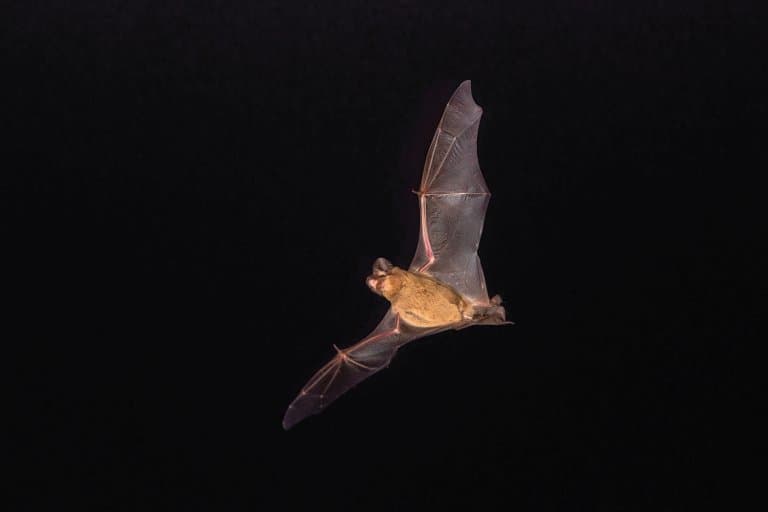
2. Red-breasted Merganser (Top Speed: 160 kph / 100mph)
Ducks certainly are one of the fastest-flying birds around in a straight line, yet their top speeds are still poorly recorded.
Somewhat anecdotal reports from train drivers and pilots form much of the recorded data on how fast these birds are, and while these may be dubious sources, their reports are exciting.
Canvasback ducks have been reported by pilots who’ve flown alongside them as reaching speeds upwards of 75 mph. In 1960, in Alaska, this was beaten by a group of six red-breasted Mergansers, who were recorded matching a plane’s airspeed of 100mph. 2
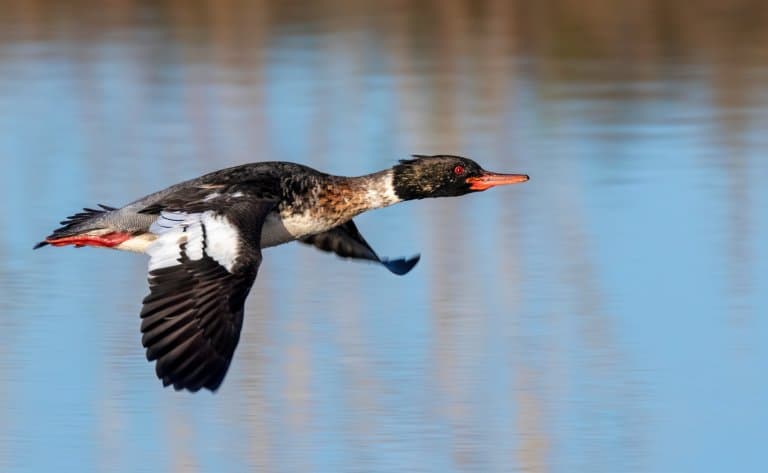
3. Saker Falcon (Top Speed: 150 kph / 93 mph)
The saker falcon makes the top 3, based upon theorised speed from extrapolating recorded data.
This bird has a very fast flapping speed, which is exactly what it sounds like. Physicists have studied this to help figure out how to make drones move through the air more efficiently, and they found that the downstroke of the flap lasts only 100ms.
In recent years, the saker falcon has also been bred with the peregrine falcon to create hybrids that provide falconers with a greater size and horizontal speed than the peregrine, that also dives to catch game like a peregrine. 3
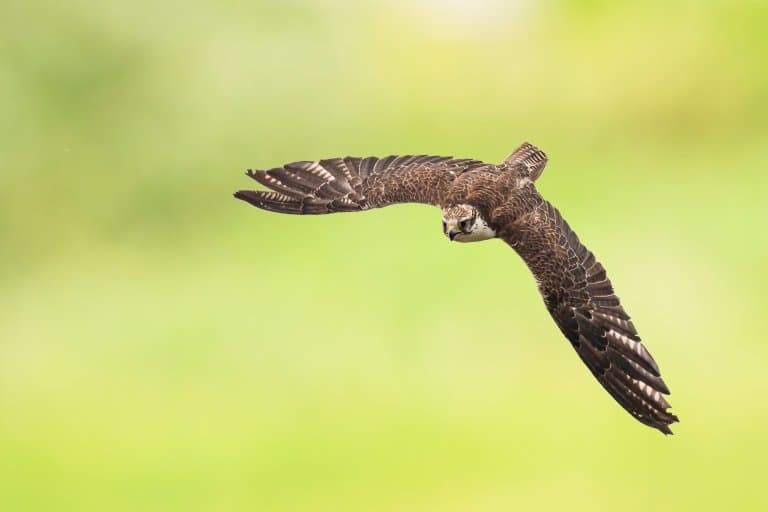
4. Racing Pigeon (Top Speed: 143 kph / 89 mph)
Pigeons are no doubt fast, and this measurement does have some backing behind it since it was recorded electronically from a chip attached to a racing pigeon, which covered a distance of 329km at an average speed of 143 kmph (89 mph).
From this confirmed data, it’s expected the bird hit maximum speeds of up to 160 kmph, making it the fastest-recorded bird.
Pigeons are commonly attributed with some of the top flying speeds in the animal kingdom, but outside of racing birds, there’s a lack of concrete evidence of just how fast they can fly. 4
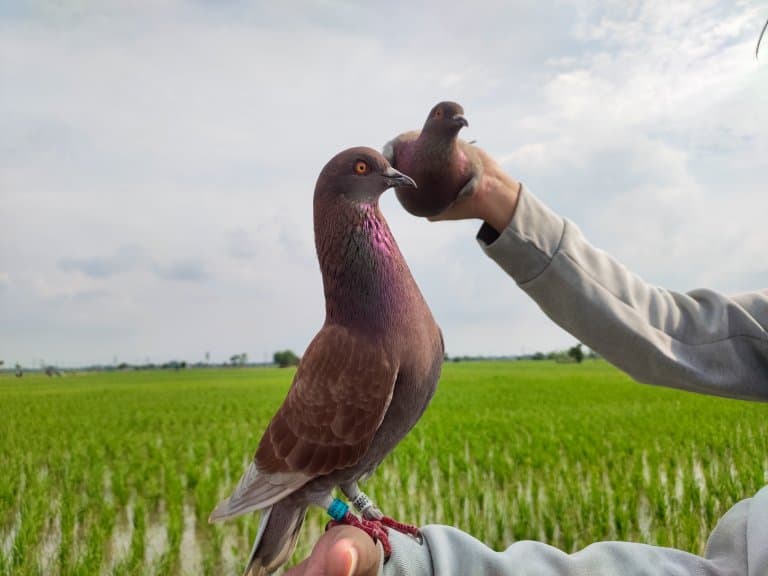
5. Osprey (Top Speed: 129 kph / 80 mph)
Ospreys are small and exciting fish-hunting birds, similar to a hawk or a falcon. It has some cool adaptations to its environment like nostrils that can close as it dives, opposable talons, and barbed scales on its feet to help grip fish.
This speed record comes from another rather outdated source, from 1943, and was reported in the Quarterly Journal of Ornithology. Maurice Braun and Ben V. Goodwin report a case of an osprey ‘cheating’; making use of a powerful thermal to hit a maximum flat speed of 80 mph.
This manipulation of an up draft allowed the bird to enter what would otherwise be a dive while maintaining altitude. The bird was mostly gliding but did contribute “two half-flaps”, so whether this counts or not is up to you. 5

6. Grey-headed Albatross (Top Speed: 127 kph / 79 mph)
French and British researchers working in the sub-Antarctic recorded a satellite-tagged, grey-headed albatross (Thalassarche chrysostoma) at flying speeds of 127 kph (79 mph). The albatross currently holds the record for ‘fastest bird in level flight’ according to the Guinness World Records.
Incredibly the albatross which has a huge wingspan of up to 2.2m, sustained this speed for more than 8 hours while returning to its nest at Bird Island, South Georgia.
There is one caveat to this, it was during an Antarctic storm and may have been helped by wind.
Theory suggests that albatross cleverly regulate their airspeed in relation to wind speed and relative wind direction. 6
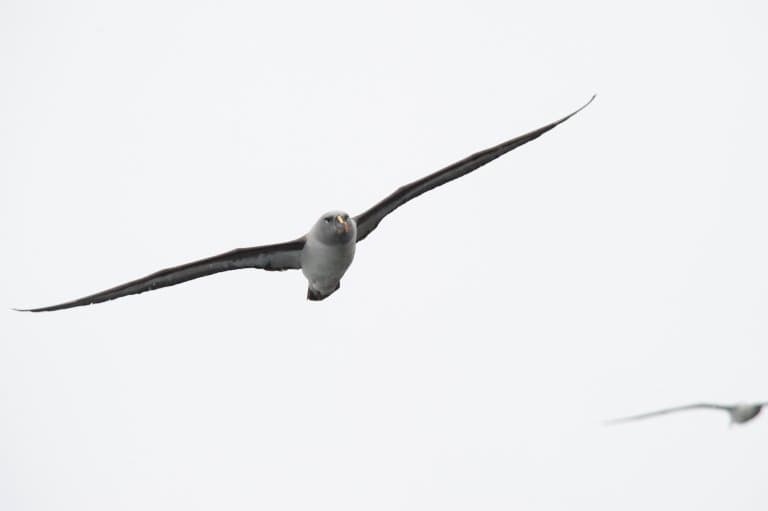
7. Common Swift (Top Speed: 112 kph / 70 mph)
The streamlined common swift was previously the fastest-flying bird ever conclusively recorded, before the albatross, and that cheeky pigeon.
Swift birds attend what are known as ‘screaming parties’ in which they, well, scream at one another. And fly really, really fast.
This is primarily a mating routine, and it sounds like a really exciting one, though there are plenty of non-mating voyeurs involved too. This display of incredible speed is thought to be how the birds show off their vitality to others. 7

It’s possible that swifts could be much higher on this list, as it’s claimed a relative of the common swift, the white-throated needletail reached speeds of up to 170 kph (105 mph) in horizontal flight.
However, this is an unverified claim, and the methods used to measure its speed have not been published. 8
8. Peregrine Falcon (Top Speed: 100 kph / 62 mph)
While the peregrine is the most well-known for diving at speed, the highest horizontal velocity we could find comes from an “experienced falconer”, as far back as 1933.
This bird is so much faster in a dive that it’s the focus of a lot of attention from scientists studying fluid dynamics. In fact, they dive so fast that it’s very difficult to study them, and instead, mathematical models have to be constructed.
The results of studying these models show that the extra speed in a diving peregrine grants it manoeuvrability bonuses, allowing it to achieve turn forces much greater than at slower speeds, and allowing them to change directions quickly during a hunt. 9
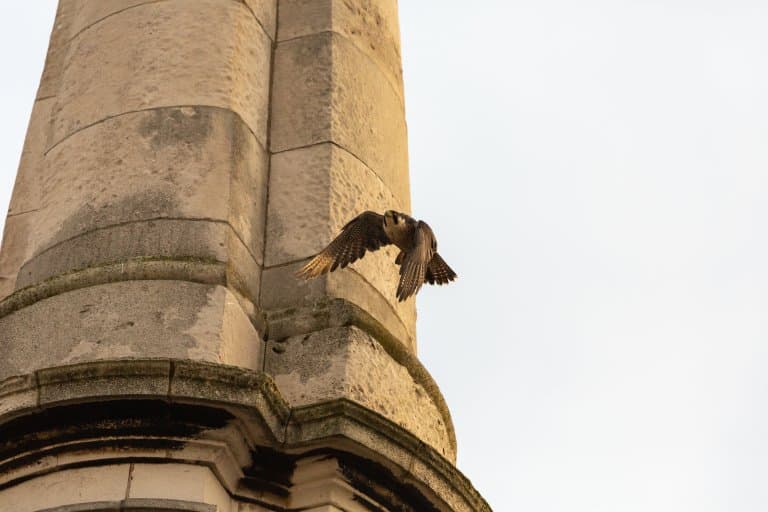
9. Golden Plover (Top Speed: 100 kph / 62 mph)
This is one of the fastest game birds in Europe. Just how fast it is, as is the case with everything on this list, is still a matter of debate. The same 1933 source from May Thatcher Cooke has them recorded as able to “beat with ease a train going 58 – 62 mph”, and unconfirmed reports of up to 70mph are common. 10
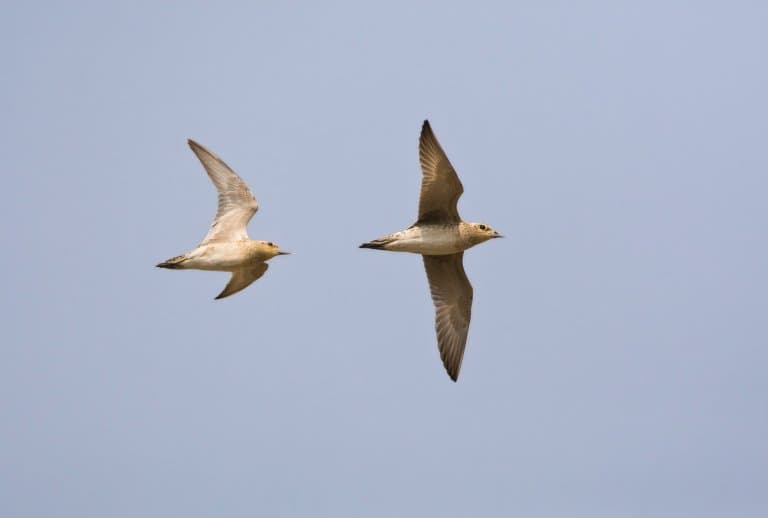
10. Crow (Top Speed: 97 kph / 60 mph)
Thatcher Cooke also lists a crow, just about managing to keep up with the same train, putting it right behind the plover in terms of maximum speed.
It’s said that they can also dive even faster, though this is hard to confirm. 11
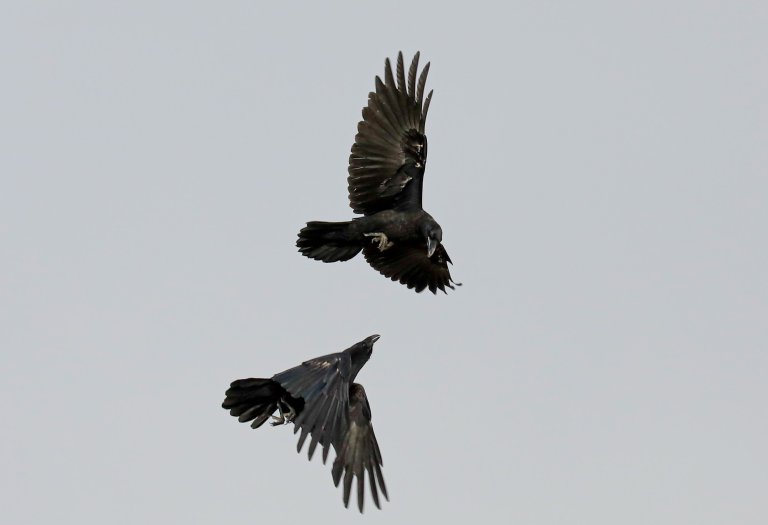
Top 3 Fastest Diving Birds
If we allow falling diving rather than just powered horizontal flight, then the list will look a little different – with some familiar birds.
Let’s have a quick look at the top 3 fastest birds when including ‘stooping’.
1. Peregrine Falcon (Top Diving Speed: 389 kph / 242 mph)
They peregrine falcon is in the top 10 for horiztonal flight, and is famously the outright fastest bird in the world when performing dives or ‘stoops’.
They have been recorded diving at an incredible speed of 389 kph (242mph), which is in the Guiness Book of Records and also makes it technically the fastest animal in the world.
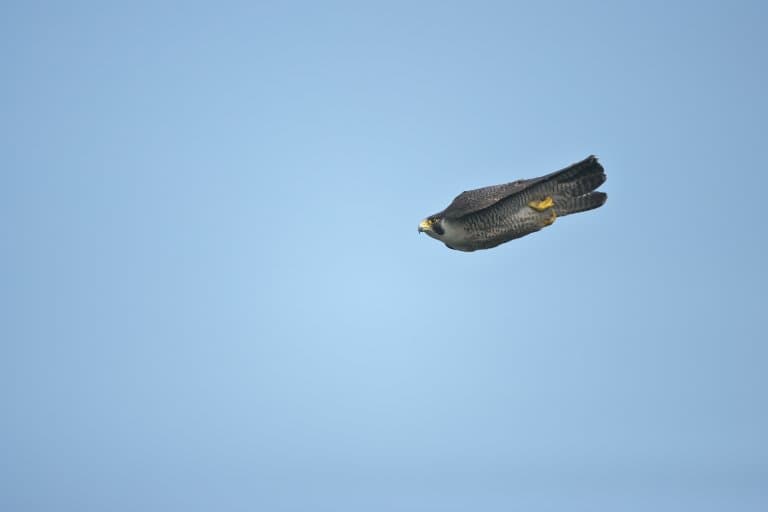
2. Golden Eagle (Top Diving Speed: 322 kph / 200 mph)
Golden eagles are large, powerful raptors with a wingspan that can measure over 2.3m (7ft 8).
In a straight, vertical stoop, golden eagles are capable of speeds in excess of 200 miles per hour; a hunting tactic which they use to catch large high-flying birds like storks and geese, and even fox.
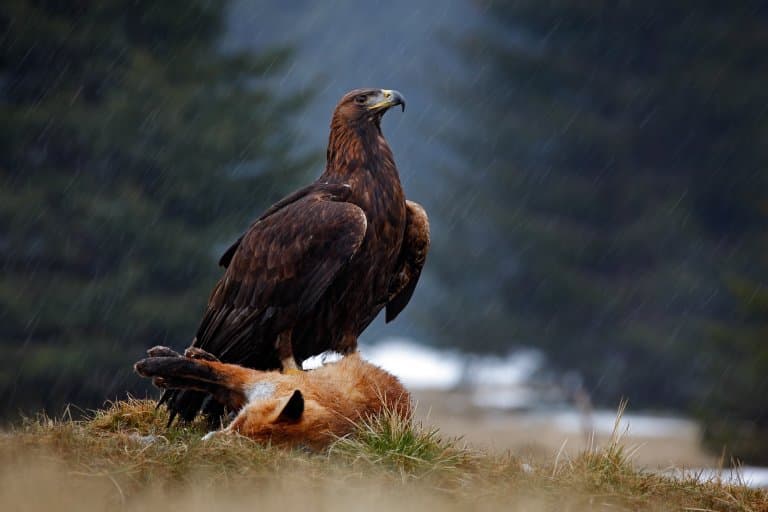
3. Saker Falcon (Top Diving Speed: 320 kph / 198 mph)
The saker falcon is the third-fastest bird in horizontal flight, and also the third fastest when diving.
While it can swoop from heights when hunting prey, the saker falcon often hunts by horizontal pursuit, rather than the peregrine’s ‘stoop’. These incredible birds feed mainly on rodents and birds.
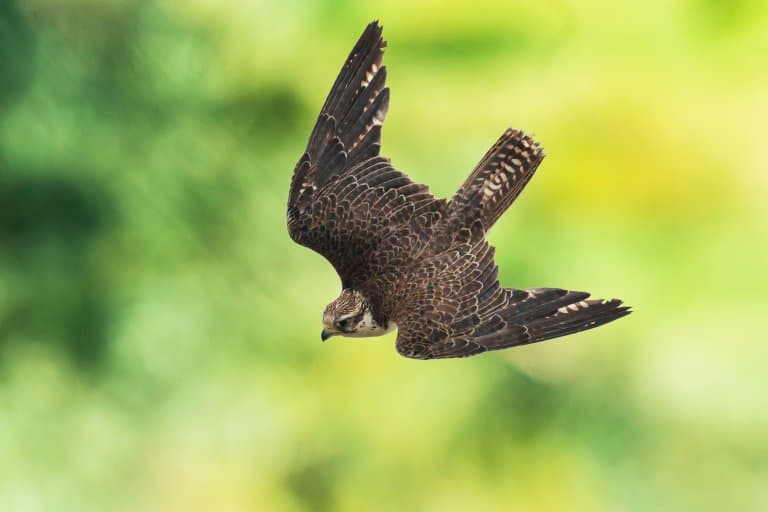
Final Thoughts
So, these are the fastest flying animals in the world that we could find and verify. Does that mean they’re the top ten fastest animals for sure? Not remotely.
Measuring flying speed comes with a lot of complexity.
Firstly, animals don’t dump all their energy into flying as fast as they can unless it’s very important, and the chances of someone being there to measure it at that moment are slim. So, it’s safe to say that most of these top speeds can be improved upon.
Secondly, there’s always going to be a gamble between expending all your energy on the chance of a kill or an escape, and saving some for a second shot, should you need it, the latter of which makes finding an optimal speed sometimes more important than finding a maximum speed.
This is supported by the data on falcons, which shows that they control their speed during dives, rather than just falling out of the sky.
You then have to consider wind speed, and whether the birds are really powering their flight using their wings, or if they are using wind and thermals to help. And does that matter?
On top of all this uncertainty, you have to factor in people who make stuff up on the internet, which, sadly, accounts for a lot of the top speeds listed on sites with no references for their claims. This does muddy the waters a bit, as does the fact that kilometres and miles get jumbled up sometimes, resulting in inaccurate reports.
Ultimately, if you’re curious about the truth, always ask where a figure came from. Check your sources and follow them back to the original claim. Often times, you’ll find it was retrieved from within the lower backend of an anonymous blogger and can be safely dismissed.
All the listed animals above have a reference at the end of their description to a paper where their speed been recorded and verified, which you can also find below.
Fact Sources & References
- Gary F. McCracken (2016), “Airplane tracking documents the fastest flight speeds recorded for bats“, The Royal Society.
- Max C. Thompson (1961), “The Flight Speed of a Red-breasted Merganser“, The Condor.
- Martin Heinold (2019), “Aerodynamic Investigation of the Free Flapping Flight of a Saker Falcon“, SpringerLink.
- Benny Koerhuis (2019), “Sibculose postduif is met 143 km/u de snelste van Nederland“, Tubantia.
- Maurice Broun (1943), “Flight Speeds of Hawks and Crows“, Quarterly Journal of Ornithology.
- “Fastest bird in level flight“, Guinness World Records.
- Per Henningsson (2010), “How swift are swifts?“, Wiley Online Library.
- Jody Bourton (2010), “Supercharged swifts take flight speed record“, BBC Earth News.
- Katie Langin (2018), “Peregrine falcons maneuver best when dive-bombing at more than 300 kilometers per hour“, Science.org.
- Cooke, M. T. (1933), “Speed of Bird Flight“, Sci Hub.
- Cooke, M. T. (1933), “Speed of Bird Flight“, Sci Hub.
